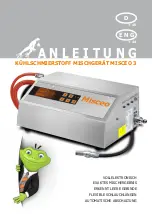
capacitor remains seated. Remove excess leads on the bottom
side of the board with diagonal cutters.
9. Locate capacitor C16 (1000pF). The is a polystyrene capacitor
and will be marked with a "1000J" on the body. (actual value in
pF).
10. Mount C16 and solder both leads in place, making sure the
capacitor remains seated. Remove excess leads on the bottom
side of the board with diagonal cutters.
11. Locate capacitor C17 (1000pF). The is a polystyrene capacitor
and will be marked with a "1000J" on the body. (actual value in
pF).
12. Mount C17 and solder both leads in place, making sure the
capacitor remains seated. Remove excess leads on the bottom
side of the board with diagonal cutters.
13. Locate capacitor C18 (1000pF). The is a polystyrene capacitor
and will be marked with a "1000J" on the body. (actual value in
pF).
14. Mount C18 and solder both leads in place, making sure the
capacitor remains seated. Remove excess leads on the bottom
side of the board with diagonal cutters.
15. Locate capacitor C19 (1000pF). The is a polystyrene capacitor
and will be marked with a "1000J" on the body. (actual value in
pF).
16. Mount C19 and solder both leads in place, making sure the
capacitor remains seated. Remove excess leads on the bottom
side of the board with diagonal cutters.
17. Locate capacitor C2 (.1uF). This is a disc ceramic type
capacitor and will be marked "104" or "104Z" (actual value in
uF). Carefully install C2, be sure not to chip the ceramic
material. Once installed, then solder in place and trim the leads.
18. Locate capacitor C7 (.1uF). This is a disc ceramic type
capacitor and will be marked "104" or "104Z" (actual value in
uF). Carefully install C7, be sure not to chip the ceramic
material. Once installed, then solder in place and trim the leads.
19. Locate capacitor C3 (.1uF). This is a disc ceramic type
capacitor and will be marked "104" or "104Z" (actual value in
uF). Carefully install C3, be sure not to chip the ceramic
material. Once installed, then solder in place and trim the leads.
20. Locate capacitor C4 (.1uF). This is a disc ceramic type
capacitor and will be marked "104" or "104Z" (actual value in
uF). Carefully install C4, be sure not to chip the ceramic
material. Once installed, then solder in place and trim the leads.
21. Locate capacitor C6 (.1uF). This is a disc ceramic type
capacitor and will be marked "104" or "104Z" (actual value in
uF). Carefully install C6, be sure not to chip the ceramic
material. Once installed, then solder in place and trim the leads.










































